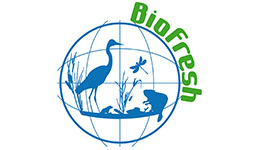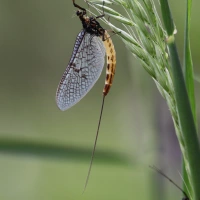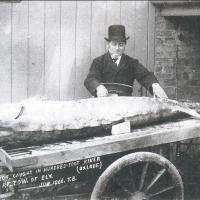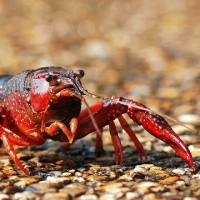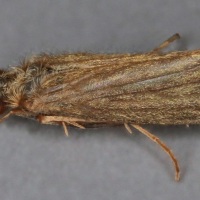A smart future for conservation?
Visit the Digital Conservation website.
The increasing affordability and accessibility of new mobile and web technologies such as smartphones is opening up a host of new opportunities for conservation. We’ve already discussed citizen e-science projects such as Project NOAH on the blog, and the list of innovative ways that new technologies are being used to further conservation practice is increasing rapidly.
Last week, the Biodiversity Institute of the Oxford Martin School hosted a symposium entitled ‘Mobile computing, citizen science and conservation recording’ to explore these emerging trends. Convened by Paul Jepson from the School of Geography in conjunction with The British Trust for Ornithology and BirdGuides, the symposium represented a response to the growing adoption of smartphones in Europe and the resulting potential to link new forms of biological recording with biodiversity informatics, creating new data and enhancing public participation in science.
Four key questions were posed to participants:
1. What is the future of these new technologies – particularly mobile computing?
2. How can mobile computing and crowd sourcing technologies be deployed to improve upon current conservation practices?
3. How can these technologies transform biodiversity recording and monitoring?
4. How can these technologies be used to extend citizen science programs and nature appreciation in general?
Mobile computing technology may be used to enhance field identification of species – providing an interactive alternative to traditional field guides. For example, BirdGuides supplies detailed bird identification guides on mobile technology, enhanced by regularly updated information on the location and migration of populations. Whilst BirdGuides charges for this information, a free alternative for a range of taxa is provided by citizen science initiative iSpot (more on iSpot below). An exciting idea discussed at the symposium was the possibility of creating a smartphone app which could identify bird song from unseen individuals. Similarly, Richard Grenyer from Oxford University and Simon Tokumine discussed the potential of geo-located photographs (potentially in 3-D in the future) allowing rapid identification of species based on previously known data about the area in which they were observed through mobile technologies.
Equally, these technologies are increasingly put to use in online data recording and collection projects such as Observado, BirdTrack and Project NOAH. Both Iain Downie from the British Trust for Ornithology and Kate Jones who from the Zoological Society of London (founder of citizen science initiative iBats) emphasised that smartphone-led citizen science programs should acknowledge the need for rigorous experimental design in underpinning data collection, in order to make the results scientifically valuable. Jonathan Silvertown from UK citizen science initiative iSpot offered a slightly different perspective, suggesting that the value of such programs isn’t only in the creation of data, it is also in encouraging people to engage with the natural world who otherwise might not. He stated that this engagement is likely to become increasingly important in years to come as the uptake of new naturalists from younger generations replaces the current, ageing generation.
iSpot provides an informal, community based learning environment in which users gain badges as they become more proficient at identifying, contributing and validating biodiversity data (the scout badge aesthetic echoing our work at Oxford on new technologies reinventing old practices). This idea of the rewards offered to citizen science contributors was a recurrent theme. Where iSpot rewards users with badges indicating reputation, other initiatives such as Galaxy Zoo design the data collection process as a game, in this case where users describe the characteristics of photographs of galaxies (another example of such a game is Pooter!). Current data is not the only focus of such projects – some initiatives like Old Weather are calling on contributors to help digitise historical Royal Navy weather patterns in order to help understand climatic histories. Open source online software like EpiCollect – designed by David Aanensen at Imperial College – has the potential to allow a wider range of individuals and institutions to easily design data recording forms for mobile technology – further increasing the scope of this collection process.
The ease with which collected data may be organised, stored and made accessible to the public, scientists, the media and policy makers was described by the representatives of Dutch data framework Observado. Driven by user-submitted data, Observado has been hugely successful, bringing together over 810,000 sightings by over 1,900 users. The question of how to validate submitted citizen science data for accuracy and reliability was another theme running throughout the symposium. Observado tackles potentially problematic data by organising a network of volunteer administrators with expertise in particular taxonomic groups to check submitted data.
Simon Tokumine from the UNEP-WCMC emphasised that whilst smartphone technology has much to offer the conservation movement, its scope in the UK is currently hindered by the fact that only around 18% of our national parks have the 3G data coverage necessary for transmitting large quantities of video and image data. Accordingly, he argued that any biodiversity recording app must be able to run without connectivity, and have the ability to store and delay the upload of data. You can read more on this at his blog post about the day.
The tone of the day was one of excitement and creativity – and regardless of the theoretical and methodological questions that come with the adoption of any such new practices, it is clear that there are productive new avenues for the conservation movement to explore.
Plenty to think about, and as ever we’re keen to hear your questions, comments and suggestions.
Links to symposium presenters:
- Conrad Wolfram, Wolfram Alpha
- Simon Tokumine, UNEP – WCMC
- Hugo Nieuwenhuys & Martijn de Jong – Observado
- Iain Downie, British Trust for Ornithology
- Fiona Barclay, Birdguides
- Kate Jones, ZSL – iBat
- Jonathan Silvertown, Open University –iSpot
- Arfon Smith, University of Oxford –Zooniverse
- David Aanensen, Imperial College – EpiCollect
- Richard Grenyer, University of Oxford
Other interesting links to new technologies in citizen science:
- Citizen Science Alliance
- Project NOAH (Networked Organisms and Habitats)
- Fold it
- Seti@home
- iBird
- Stardust at Home
- Harlequin Ladybird Survey
- Indicia: The OPAL Online Biological Recording Toolkit
- UK Field Studies Council identification apps
- Everytrail
- Wired article on using smartphones to map urban fruit trees





